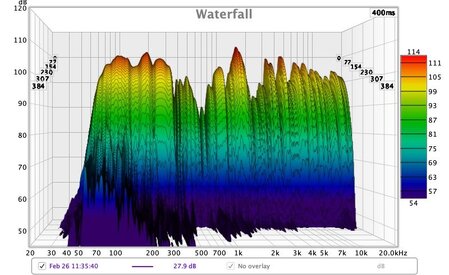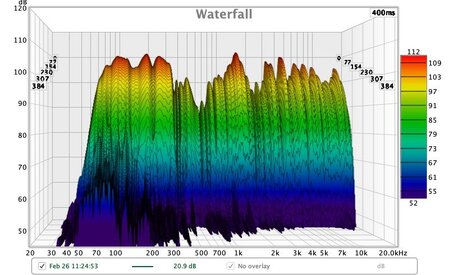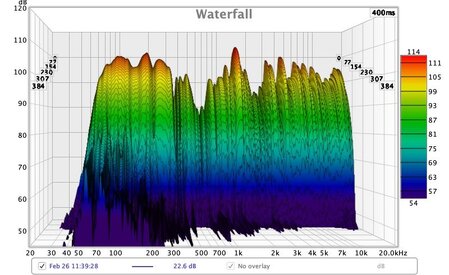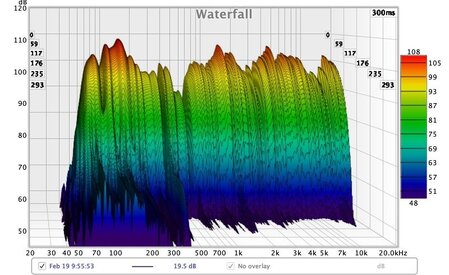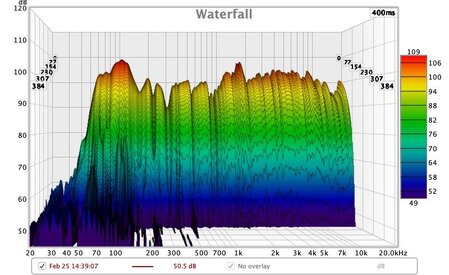Ali
You may wish to provide a lot more information about how these measurements were taken.
A few of the key questions are below, which may help understand the variances...
Without having the benefit of all the information that may help explain the variances, nevertheless IMHO, I think that your results are fairly consistent, as all the key dips and bumps in frequency are consistent in all the measurements....
i,e the average level or peak of the results varies by over 10 dB from the loudest to the quietest measurement....as captured in REW.......
That change in level, is enough to change the frequency response of your speakers, and the interaction with the room...
What did you change to end up with such a variation in the levels of the captured response.....dB see in your measurement graphs...?
I think you are not using a subwoofer and the low frequency area of your graphs indicates that you are most likely using a speaker with a port. i,e bass reflex,
The dips and valleys are fairly consistent with SBIR and Room modes at the point of measurement,,,,, typically you would need a lot more than just bass traps to reduce these,
i,e some acoustic treatment for the higher frequencies may help, as well as some diffusion rather than just absorption....so that the likelihood of major dips and bumps is reduced, producing more small variations rather than a few large ones.
Acoustics is a complex science. i,e there are so many interactions... speaker, .and unless you are willing to find and pay a good audio consultant, you are in the land of a lot of trial and error..
IMHO I think your room is absorbing reverberant sound - i.e echos, well enough (but that of course depends on what your ideal objective or use of the room is) from the rate at which the audio level falls in time.. typically a drop of 40 to 60 dB within the 1st 200 milliseconds, at about all frequencies... so I do not think the room is the issue....
It is possible that certain frequencies are being over absorbed, but overall this is probably the result of your speakers, i.e your speakers are the 1st problem, especially if you have multiple drivers, these will interact with each other and create dips and bumps purely by the speaker itself, and no amount of absorption or acoustic correction can change or improve this....
Its difficult to suggest anything more until I have a clearer understanding. I do hope you can provide answers to the questions below.
Are you consistent in your audio levels when measuring.? Your measurements indicate a difference in level, which can easily explain the differences in measurement..results..
What kind of speakers and or power amplifiers, are you using.?
What Microphone are you measuring with.?
How are you positioning the microphone, distance from speakers, pointed up or forward, or towards each speaker.
Are these measurements taken using one speaker, or from two different speakers with their output combined.... (i.e left and right together).
Do you have a subwoofer..?
Are there any slight changes from day to day, in the position and pointing of the microphone....?, from one day to the next, or from one measurement occasion to the next.
Are you sure your microphone is positioned in exactly the same place, pointing in exactly the same direction?
Are you in the room when you take these measurements? so your presence and position in the room, which is not exact, may affect the accuracy as your own body absorbs and reflects some of the sound in a different way each day, especially if you are positioned anywhere near the speakers or the microphone.
Do you use the delayed measurement feature of REW measurement, so that you can have enough time to leave the room, so that your own body is not affecting the measurement..?
Are there any significant changes in temperature, in the room of up to 5 degrees centigrade, between the occasions of these measurements.? Temperature changes can affect the accuracy of your measurement microphone, especially the affordable kind, like an EM8000.
Are you using an individual calibration for your specific microphone. to improve the measured result?
Are you aware that temperature changes also affect how sound is transmitted, and even small changes of 5 degrees centigrade will make audio sound different....
E.g taking some measurements in the morning and another in the evening, or in a cooled or heated room, will change the results of your measurement.
Dis you move anything around or change position thereof, of any object in the room, between each of these measurements?
Simple things like having a window open or closed, or a door open or closed change the results., or a cabinet door open or closed....







